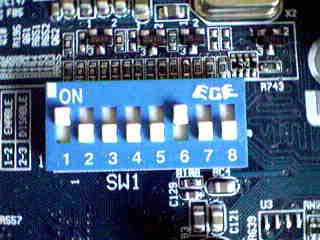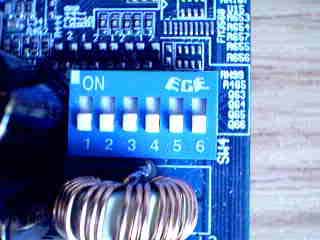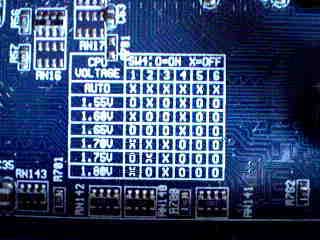Gigabyte GA-6RX Apollo Pro266 ATX
by Mike Andrawes on March 8, 2001 2:15 AM EST- Posted in
- Motherboards
If you overclock it, they will come
Plainly implementing the Apollo Pro266 chipset is not enough to make the GA-6RX stand out from the rest of the crowd. As we have seen a lot of times, it’s really up to the manufacturers to put in all kinds of extra features that make their motherboards truly exceptional.
One of the most important things hardware enthusiasts – most AnandTech Readers – look for is overclocking support. Gigabyte has never been the master in overclocking, and they put in an average amount of overclocking options for you with the GA-6RX. With the help of the AMI Simple BIOS setup, you can tweak your FSB speeds and CPU core voltage from within the BIOS.
The FSB speeds available to you are 66 / 75 / 88 / 90 / 100 / 105 / 110 / 115
/ 124 / 130 / 133 / 136 / 140 / 145 and 150 MHz, which is not ideal in the sense
that there are some large gaps in between the FSB frequencies. In order to
fully tweak your CPU and push it to the limits, FSB with 1MHz increments are
required, and Gigabyte still has yet to implement that on their motherboards.
Also, the whole set of FSB speeds values are not always available. During our
tests we used a 133MHz CPU, and the only FSB speeds available were 133 / 136
/ 140 / 145 / 150 MHz since the board does an auto detect of the B21 pin state.


Dipswitch settings for FSB frequency
The CPU core voltage can also be manipulated from within the BIOS and the selectable values range from 1.30V to 2.05V in 0.05V increments. Keep in mind that putting too high of a voltage on your CPU may actually damage it, and voltages more than 15% above your CPU's default voltage may be pushing it.


The voltage dipswitch settings
Even though all the voltages and FSB speeds are accessible from within the BIOS, Gigabyte still provides two sets of dipswitches on the GA-6RX for you to manually set the FSB speeds and the voltage. The reason for the presence of the dipswitches is most likely to provide OEMs with an easier way to setup the board.
Actions speak much louder than words therefore it’s important for us to find out just how well the GA-6RX can overclock. During our testing, with default CPU voltage, we were able to raise the FSB speed to 136MHz without any issues. At 140MHz, the system couldn’t maintain much stability when we were trying to run our benchmark suite. Here, once again, we see the importance of 1MHz FSB increments since the system might be able to run at 138MHz but not 140MHz.
Unlike some other motherboards, the GA-6RX does not allow for the manipulation of I/O voltage settings, which can come in handy when performing some extreme overclocking. The board does provide what Gigabyte calls “over voltage” settings for the memory and the chipset through jumpers, which might be able to make the system more stable in some overclocking situations.
The GA-6RX has a total of three fan headers on the motherboard, one for the CPU HSF unit and two for chassis fans. Inside the BIOS setup you are able to monitor the speeds of two of them as well as two temperatures and two voltages.
Stability wasn’t always the strongest hammer for Gigabyte, but the GA-6RX came out to be pretty impressive. Gigabyte doesn’t feature any large capacitors, but they do put in two 1500uF, six 1200uF and twelve 330uF capacitors around the CPU socket, the North Bridge, and the DDR DIMM slots. Together with the clean design of the board, the GA-6RX only crashed once time within 24 hours, which is definitely above par since on the average we encounter around 5 to 6 crashes during 24 hours.










0 Comments
View All Comments